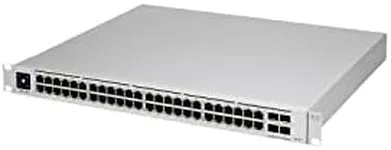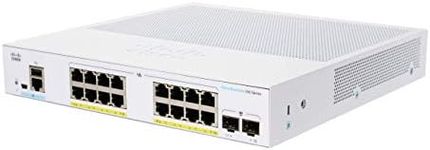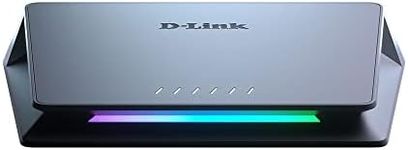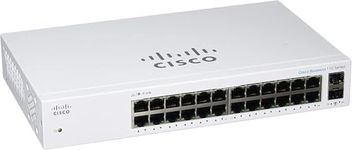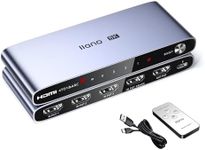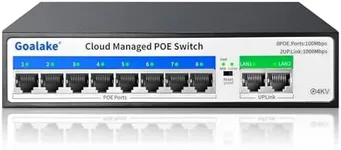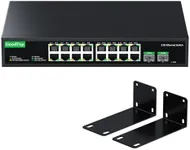Buying Guide for the Best Ethernet Switch For Gaming
Choosing the right Ethernet switch for gaming can significantly enhance your online gaming experience by providing a stable and fast network connection. When selecting an Ethernet switch, it's important to consider several key specifications to ensure it meets your gaming needs. Understanding these specs will help you make an informed decision and get the best performance out of your gaming setup.Port CountThe port count refers to the number of devices you can connect to the Ethernet switch. This is important because it determines how many gaming consoles, PCs, and other network devices you can connect simultaneously. If you have a simple setup with just a few devices, a switch with 4 to 8 ports may suffice. For more complex setups with multiple gaming devices, streaming equipment, and other peripherals, you might need a switch with 16 or more ports. Consider your current and future needs to choose the right port count for your setup.
SpeedThe speed of an Ethernet switch is measured in megabits per second (Mbps) or gigabits per second (Gbps). This spec is crucial for gaming because it affects how quickly data can be transferred between your devices and the internet. Common speeds include 10/100 Mbps (Fast Ethernet) and 1 Gbps (Gigabit Ethernet). For gaming, a Gigabit Ethernet switch is recommended as it provides faster data transfer rates, reducing lag and improving overall performance. If you have a high-speed internet connection and multiple devices, a Gigabit switch is the best choice.
Managed vs. UnmanagedEthernet switches come in two main types: managed and unmanaged. Unmanaged switches are simple plug-and-play devices with no configuration options, making them easy to use but less flexible. Managed switches offer advanced features like traffic prioritization, VLANs, and network monitoring, which can be beneficial for optimizing gaming performance. If you are a casual gamer with a straightforward network setup, an unmanaged switch may be sufficient. However, if you want more control over your network and the ability to fine-tune settings for optimal gaming performance, a managed switch is the better option.
Quality of Service (QoS)Quality of Service (QoS) is a feature that allows you to prioritize certain types of network traffic, such as gaming data, over others. This is important for gaming because it helps ensure that your gaming traffic gets the bandwidth it needs, reducing lag and improving performance. When looking at Ethernet switches, check if they support QoS and how easy it is to configure. If you frequently experience network congestion or have multiple users on your network, a switch with QoS can help maintain a smooth gaming experience.
LatencyLatency refers to the delay between sending and receiving data over the network. Low latency is crucial for gaming as it ensures quick response times and a more seamless experience. Ethernet switches with low latency are designed to minimize this delay, providing faster communication between your gaming devices and the internet. When choosing a switch, look for models that are specifically marketed as low-latency or gaming switches. If you play fast-paced online games where every millisecond counts, prioritizing low latency is essential.
Power over Ethernet (PoE)Power over Ethernet (PoE) allows the switch to deliver power to connected devices, such as gaming consoles or network cameras, through the Ethernet cables. This can be useful if you want to reduce the number of power adapters and cables in your setup. While PoE is not a necessity for gaming, it can add convenience and reduce clutter. If you have devices that support PoE and you want a cleaner setup, consider an Ethernet switch with PoE capabilities.
